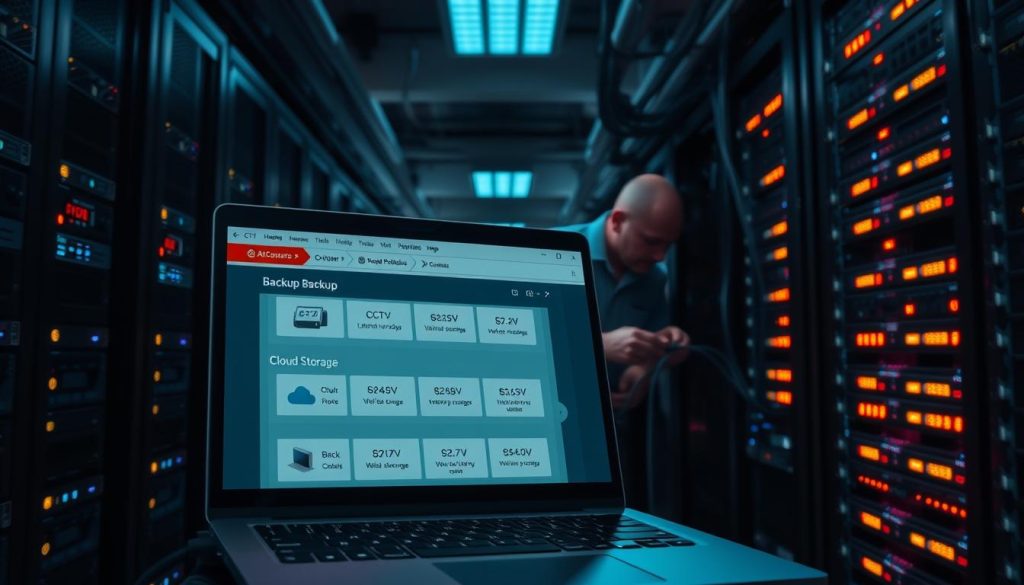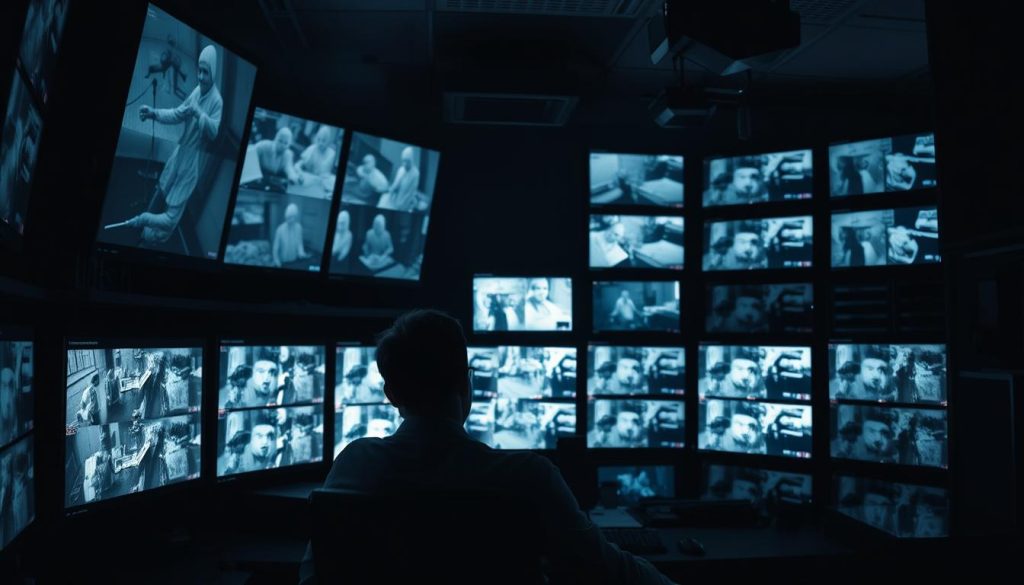In today’s world, security is key. Many wonder if they can get CCTV footage from two years back. With more people wanting better surveillance, knowing how to get old footage is important. This is true for keeping both personal and business places safe.
Things like how much storage a system has, what kind of system it is, and its policies on keeping footage matter a lot. If you’re looking to get old footage, talking to experts in CCTV video management is a good idea. For example, those at CCTV Maintenance in Singapore can help find solutions that fit your needs.
Key Takeaways
- Getting CCTV footage from two years ago can be complex and often depends on the system’s storage capabilities.
- Understanding the retention policies of your CCTV system is essential for effective footage retrieval.
- Consulting with professionals can provide insights into the best practices for managing historical CCTV footage.
- Storage duration greatly influences the availability of archived videos.
- Each CCTV system has unique features that impact how footage is managed and retrieved.
- Awareness of data management strategies can aid in securing critical evidence when needed.
The Importance of CCTV Footage in Today’s Security Landscape
CCTV footage is key in boosting security in places like businesses and homes. It’s not just for watching; it’s vital for keeping people safe and stopping crime.
Usage in Crime Prevention and Investigation
CCTV systems help prevent crimes. Studies show they can stop theft and vandalism by making places seem watched. Police use CCTV to solve crimes faster, thanks to clear evidence.
Regulatory Requirements for CCTV in Singapore
In Singapore, following CCTV rules is important. These rules make sure surveillance is fair and respects privacy. There’s a growing need for more CCTV in public areas like schools and parks to keep everyone safe. Following these laws helps protect privacy while fighting crime.
Understanding CCTV Footage Storage
Effective CCTV storage solutions are key to managing video data. The storage method chosen affects how well you can keep and find footage. Knowing the different storage options helps in better managing data.
Common Storage Solutions Used in CCTV Systems
CCTV systems use several main storage solutions. Each has its own benefits and drawbacks:
- Local Hard Drives (HDDs): Common in DVR systems, they can fill up fast because of constant data.
- Network-Attached Storage (NAS): It offers shared access but might have storage limits.
- Cloud-Based Solutions: They allow for longer video storage, based on the service provider’s policies.
How Storage Duration Impacts Footage Availability
The length of time footage is stored affects its availability. Short storage times might mean lost data. Longer times help keep footage accessible. It’s important to understand the impact of CCTV storage solutions on video retention and management.
Can I get CCTV footage from 2 years ago?
Getting CCTV footage from two years ago is not easy. It depends on the CCTV retention policies and the storage technology used. Each system has its own settings for how long footage is kept before it’s deleted. Knowing these settings is key for anyone trying to retrieve old data.
Factors Influencing Footage Retention
Keeping old footage is not the same for everyone. Several things affect how long it’s stored, including:
- Storage technology: The type of system, like hard drives or cloud storage, impacts how long footage can be kept.
- Recording settings: The choices made by users can decide how long footage stays available before it’s deleted.
- Overwrite frequency: Systems that delete data often will have less old footage available.
Typical Retention Periods for Different Security Systems
The time footage is kept varies a lot among different systems:
- Home systems usually keep footage for about 30 days.
- Businesses might keep recordings for 30 to 90 days, more in regulated areas like banking.
- This shows why it’s important to know your system’s limits to plan for getting old footage.
Common Reasons CCTV Footage Gets Deleted
There are many reasons why CCTV footage gets deleted. Knowing these can help us protect our data better. It’s important to understand these reasons to avoid losing important footage.
Automatic Overwriting Mechanisms
CCTV systems record in a loop. When they run out of space, they start overwriting the oldest footage. This is a big reason why footage gets lost, if we don’t plan to keep it long enough.
Accidental and Intentional Deletions
People often delete footage by mistake. This can happen when someone accidentally presses the wrong button. Others might delete footage on purpose, either to harm or to hide something. We need strong ways to keep our data safe from these risks.
Identifying Your CCTV System Type
Knowing the types of CCTV systems is key for good surveillance. Each system has its own features and how it handles footage. The main types are analog and digital CCTV, each with its own strengths for managing and accessing video.
Analog vs. Digital Systems
Analog CCTV uses old methods to capture and record video. It often uses Digital Video Recorders (DVRs) for simple surveillance. But, it doesn’t support remote access, limiting where you can view footage.
Digital CCTV, on the other hand, uses Network Video Recorders (NVRs). This newer method allows for cloud storage, making it easier to view footage from anywhere. It also has features like motion detection to help manage video better.
Impact of System Type on Footage Retrieval
The type of CCTV system you have affects how you get footage. Analog systems are easier to use but less flexible. Digital systems, with their advanced features, offer faster access to data.
Because retrieval methods vary, it’s important to document your CCTV setup well. Regular upkeep and knowing your system’s capabilities can help you access past footage more easily.
Recovering Deleted Footage: Backup Solutions
Having a strong backup plan is key to keeping CCTV footage safe. Accidental deletions, natural disasters, or technical issues can happen. That’s why using external hard drives or cloud services is important. It keeps your recordings safe and easy to find when you need them.
Importance of Regular Backups
Regular backups act as a safety net against unexpected problems. They help prevent data loss. By following good data management practices, you can make recovery easier and reduce risks.
These backups give you peace of mind. They protect your surveillance data from being lost or damaged by mistake.
Steps to Restore from Backups
When footage is lost, a clear recovery plan is needed. First, find where your backup files are. Then, look for deleted recordings and see if you can get them back. After that, put the recovered footage back where it belongs.
Following these steps helps you get your footage back. It also shows you’re serious about managing your data well. This makes your system more secure and reliable.

Utilizing Data Recovery Software
Data recovery software is key for getting back deleted CCTV footage. People use different tools to find lost video files. This can happen when systems crash or files get deleted by mistake. Knowing which software to use can really help.
Different Types of Data Recovery Tools
There are many data recovery software options out there. Each one meets different needs and situations. Here are some well-liked ones:
- EaseUS Data Recovery Wizard – It’s easy to use and can find many types of files.
- Disk Drill – It scans devices well and lets you see files before you get them back.
- Recuva – It’s free and good for simple file recovery tasks.
Guide to Using Recovery Software Effectively
To get CCTV footage back, using data recovery software right is important. Here’s how to do it:
- First, download and install the software on your computer.
- Then, plug in the storage device with the lost CCTV files.
- Open the software and pick the device to scan for lost footage.
- Start the scan and wait for it to find recoverable files.
- Look over the results, choose the CCTV files you want, and start the recovery.
Professional Data Recovery Services: When to Consider Them
When you can’t get your data back on your own, it’s time to call in the experts. Professional data recovery services are key when you need to get back important files, like CCTV footage. Knowing when to ask for help can make a big difference.
Benefits of Hiring Data Recovery Experts
There are many good reasons to hire professionals for data recovery:
- Expertise and Experience: They know how to tackle tough recovery jobs better than anyone else.
- Advanced Tools: They use special tools and software for jobs that need it, like fixing damaged devices or files.
- Risk Reduction: Trying to fix it yourself can make things worse. Experts reduce this risk, making recovery more likely.
- Peace of Mind: With your data in good hands, you can worry less and focus on other things while waiting for results.
Understanding the Process of Professional Recovery
Professional data recovery services start with a detailed check of the data loss. They figure out the best way to get your data back. You’ll get a clear explanation of what they plan to do.
They keep you updated on how things are going. This way, you know what’s happening and can trust them to do their job.
Legal Considerations for Accessing Archived Footage
Accessing archived CCTV footage comes with legal hurdles. Organizations must follow data privacy laws, like Singapore’s Personal Data Protection Act (PDPA). Knowing these rules is key for companies that manage surveillance data. Ignoring them can lead to serious legal trouble.
Companies need to have clear rules for accessing archived video. They must also protect the privacy of people in the recordings. It’s important to know how long footage can be kept and when it should be deleted. This knowledge helps avoid legal issues when trying to get old data.
The rules for getting stored footage should be clear and documented. This makes managing archives easier and keeps data privacy laws in check. Not following these rules can damage trust and lead to legal problems. So, understanding and following these laws is essential for managing surveillance data well.

